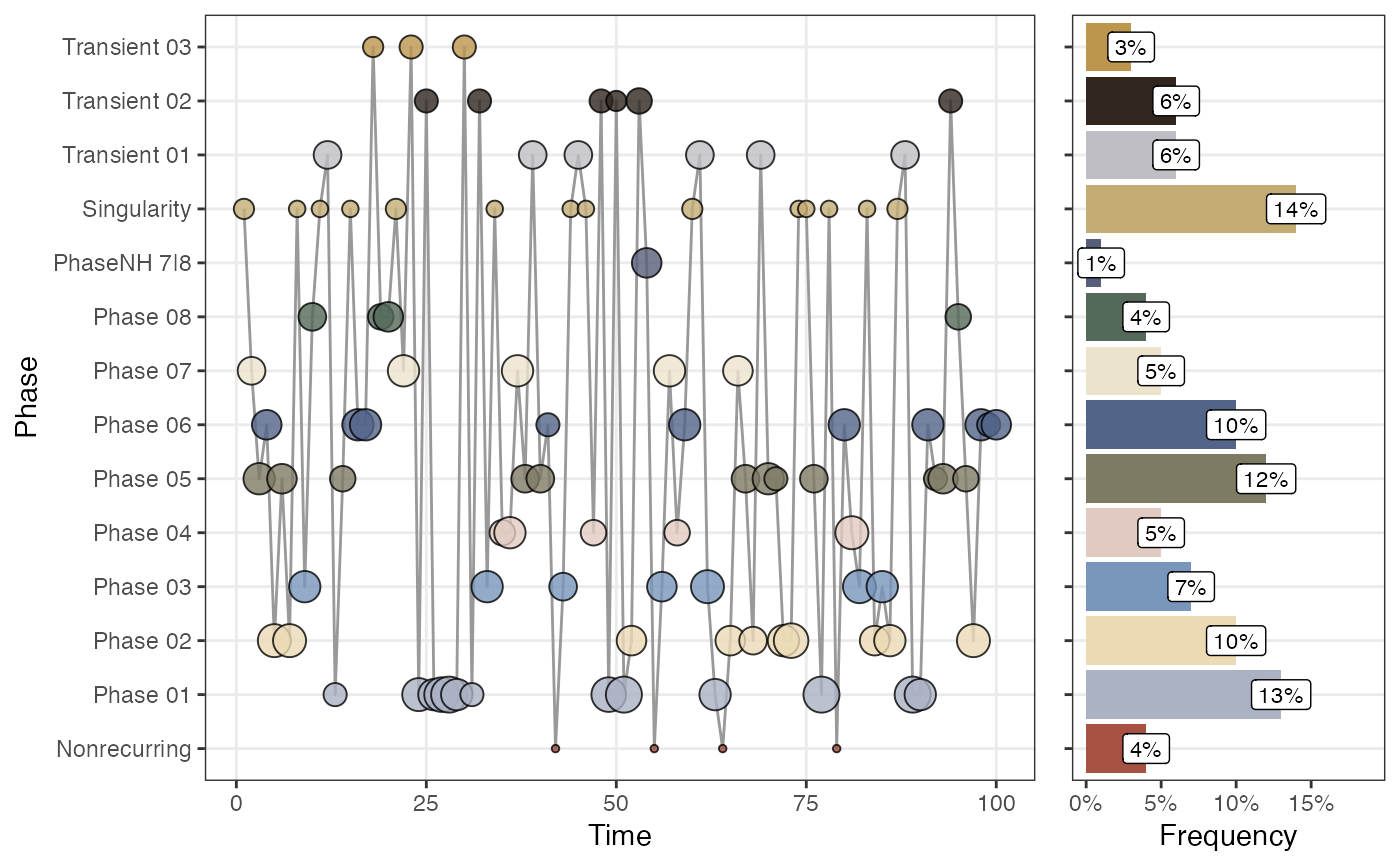Plot the sequence of phases as a time series.
Usage
plotRN_phaseTimeSeries(
phaseOutput,
showEpochLegend = TRUE,
epochColours = NULL,
epochLabel = "Phase",
excludeVars = "",
excludePhases = "",
returnGraph = FALSE
)Arguments
- phaseOutput
Output from function rn_phaseInfo
- excludeVars
Exclude specific dimension variables by name. Leave empty to include all variables (default =
"")- excludePhases
Exclude Phases by their name (variable
phase_name). Leave empty to include all Phases (after the other exclusion arguments) (default ="")
Examples
RN <- rn(y1 = rnorm(100), weighted = TRUE)
#> Set `weightedBy` to 'si' due to the value of `weighted`
phase_out <- rn_phaseInfo(RN)
#>
#> ~~~o~~o~~casnet~~o~~o~~~
#>
#> Recurring states with high similarity will be considered a phase:
#>
#> selectionMethod = degree
#> maxPhases = 100
#> minStatesinPhase = 2
#> maxStatesinPhase = 100
#> inverseWeight = TRUE
#>
#> Recurring states will be grouped as a 'Phase ##', as transients (unstable phases) 'Transient ##', phase neighbours (state connects to more than 1 identified phase) 'PhaseNH ##', singularities (state recurs less often than minStatesinPhase) 'Singularity', or as not recurring 'Nonrecurring'.
#>
#> ~~~o~~o~~casnet~~o~~o~~~
#>
#> Found 11 phases with at least 2 states.
plotRN_phaseTimeSeries(phase_out)

